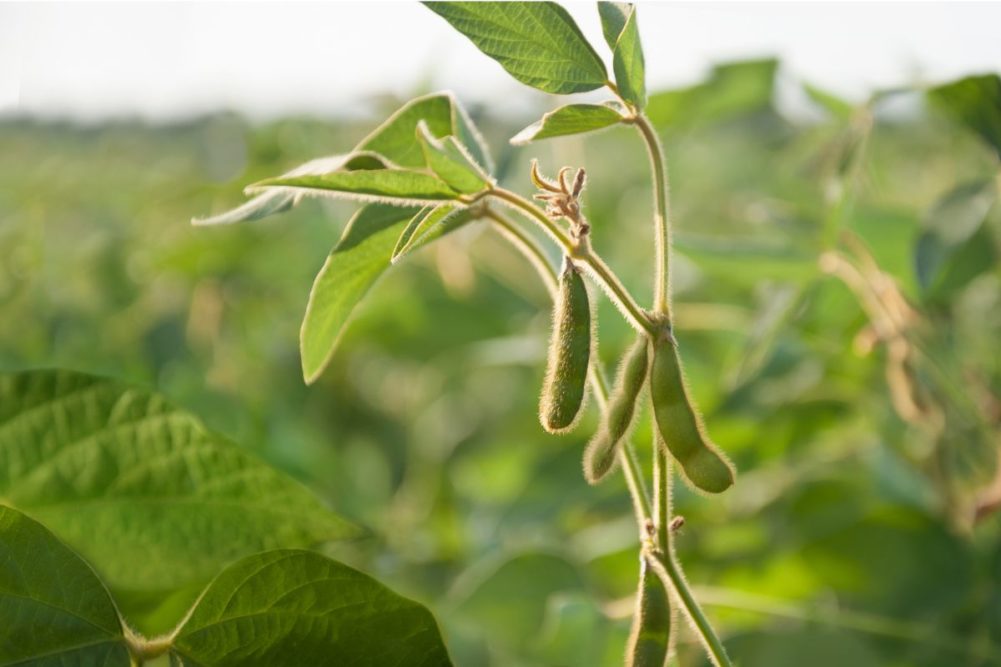2023/24 Brazil Soybean to be Impacted by Hot and Dry Weather

Rainfall in Brazil last week and over the weekend favored the southern and western areas.
The heaviest amounts fell in southern Mato Grosso do Sul, Parana, and Santa Catarina. The rains are improving the soil moisture in the western areas, but dryness remains widespread across parts of Mato Grosso, Goias, Minas Gerais, Bahia, and northeastern Brazil. The forecast for this week is calling for below normal rainfall across most of Brazil with above normal temperatures.
Rainfall is needed the most in northeastern Brazil where they received only scattered showers last week. Far southern Brazil had a few sunny days last week, but more rain moved into the region over the weekend.
The 2023/24 Brazil soybean estimate was left unchanged this week at 157.0 million tons. The rainfall remains erratic and there is still about ten percent of the crop left to plant. In their December Crop Report, Conab lowered the 2023/24 Brazilian soybean estimate 2.25 million tons from last month to 160.17 million.
The Brazilian soybeans were 91% planted as of late last week compared to 95% last year and 95.8% average according to AgRural. Planting is wrapping up in central Brazil while planting is ongoing in far southern and far northern Brazil. Erratic rainfall continues to slow planting progress in the northeastern states of Bahia, Piaui, and Maranhao. In the southernmost state of Rio Grande do Sul, planting has been slowed by excess moisture.
The 2023/24 soybean acreage in Mato Grosso was lowered last week to 12.13 million hectares (29.96 million acres) by the Mato Grosso Institute of Agricultural Economics (Imea). This represents a reduction of 0.74% from the prior month. Imea estimates that hot and dry conditions during October and November will require 5.04% of the soybeans in the state to be replanted (5.04% of 29.96 million acres = 1.50 million acres).
Hot and dry conditions limited the growth of the earlier planted soybeans resulting in a lower yield potential. As a result, Imea lowered the statewide soybean yield to 57.87 sacks per hectare (51,7 bu/ac) which is down 3% compared to last year. The 2023/24 soybean production in the state is now estimated at 42.13 million tons, which is down 3.78% from their last estimate and 7.6% lower than the 45.6 million tons produced in 2022/23.
In the municipality of Tangara da Serra in west-central Mato Grosso, farmers who missed out on the rain are reporting their soybeans are turning yellow and dying prematurely. Some farmers have torn up the soybeans so they could plant cotton.
Soybean planting in Parana is essentially complete at 99%. The soybeans were 3% germinating, 51% in vegetative development, 29% flowering, and 17% filling pods as of earlier last week according to the Department of Rural Economics (Deral). The crop was rated 2% poor, 12% average, and 86% good.
In two regions of Parana impacted by flooding, the Minister of Agriculture has given farmers permission to extend the soybean planting window until January 31, 2024. These are areas of the state where many soybeans needed to be replanted due to flooding. In the remaining areas of the state, soybeans need to be planted by December 20th.
A few days of sunny weather allowed farmers in Rio Grande do Sul to get back in the fields and plant soybeans. According to Emater, the soybeans were 76% planted as of late last week compared to 83% average. The later planted soybeans have better germination and emergence compared to the earlier plated soybeans that encountered saturated conditions for several weeks. In some areas of the state, the soybeans are being planted a month later than normal.
Soybean planting in Goias is wrapping up with 94% of the crop planted compared to 99% average. The rainfall in Goias continues to be below normal and accompanied by above normal temperatures. The crop development has been slow and some farmers took advantage of recent rain to replant some of their soybeans. More rain will be needed in Goias going forward.
The soybeans in the state Mato Grosso do Sul are 97% planted compared to 89% average. They have received ample rainfall in the southern part of the state, while the northern part of the state has been dryer-than-normal.
The soybeans are 80% planted in Santa Catarina compared to 95% average. Early development of the soybeans has been very slow and some of the soybeans need to be replanted. The Agriculture and Livestock Federation of Santa Catarina has solicitated the Brazilian Minister of Agriculture to extend the soybean planting window to January 31st to accommodate farmers who need to replant their soybeans.
Soybean planting continues to be slow in northeastern Brazil due to irregular rainfall. The slowest state is Piaui where 55% of the soybeans have been planted vs. 84% average, Maranhao is 60% planted vs. 90% average, Bahia is 79% planted vs. 92% average, and Tocantins is 80% planted vs. 92% average.
In their December Crop Report released last Thursday, Conab lowered the 2023/24 Brazilian soybean estimate 2.25 million tons from last month to 160.17 million. In the December WASDE Report, the USDA lowered the 2023/24 Brazil soybean estimate 2.0 million tons to 161.0 million.
Read also
Wheat in Southern Brazil Impacted by Dry Weather and Frosts
Oilseed Industry. Leaders and Strategies in the Times of a Great Change
Black Sea & Danube Region: Oilseed and Vegoil Markets Within Ongoing Transfor...
Serbia. The drought will cause extremely high losses for farmers this year
2023/24 Safrinha Corn in Brazil 91% Harvested
Write to us
Our manager will contact you soon



